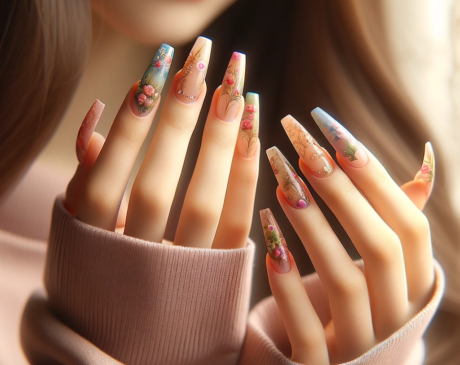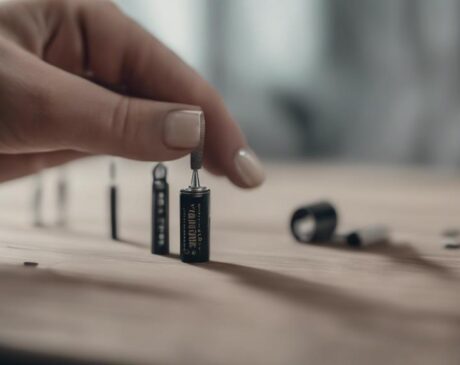Why Is My Gel Polish Still Sticky After Curing?
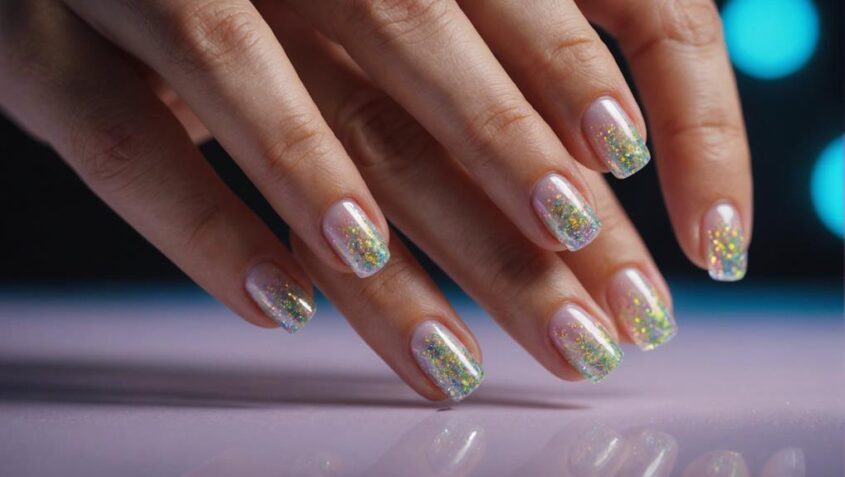
For sticky gel polish after curing, check your curing time—it might be insufficient. Correct lamp wattage is crucial, as lower wattage can cause incomplete curing and higher wattage may overcure. Apply thin gel polish layers and follow the recommended curing time diligently. Skin contact with the polish should be avoided. Inferior gel polish quality or residue on nails can lead to stickiness too. Start by ensuring your nails are clean and follow the manufacturer's instructions. Understanding these factors can help achieve a flawless, non-sticky gel polish result. Additional insights await on optimizing your gel polish application for the best outcomes.
Key Takeaways
- Ensure proper curing time as per manufacturer's guidelines.
- Use the correct lamp wattage for thorough curing.
- Apply thin gel polish layers for effective curing.
- Opt for high-quality gel polishes to avoid stickiness.
- Clean nails properly to prevent residue post-curing.
Inadequate Curing Time

Insufficient curing time is a common factor that may lead to gel polish remaining sticky even after the curing process. When gel polish is not adequately exposed to the curing light, the chemical reaction that transforms the gel into a hard, durable finish is incomplete. This can result in a tacky residue that no amount of wiping or additional curing can resolve.
To ensure proper curing, it is crucial to follow the manufacturer's guidelines regarding curing times. Different gel polish brands and formulas require specific durations of exposure to the curing light to achieve optimal results. Investing in a high-quality LED or UV lamp with adequate wattage is also essential to expedite the curing process.
Moreover, techniques such as applying thinner layers of gel polish can help ensure thorough curing. Thin layers allow the curing light to penetrate more effectively, reducing the likelihood of sticky residue. By paying attention to curing times and techniques, you can achieve flawless, non-sticky gel polish manicures that last.
Incorrect Lamp Wattage
Using the correct lamp wattage is crucial for achieving proper curing of gel polish, preventing it from remaining sticky after the curing process. When the lamp wattage is incorrect, the gel polish may not cure fully, leading to a sticky residue on the nails. This issue occurs because the lamp's wattage directly affects the intensity of the light emitted, which is necessary for activating the gel polish's curing process.
To ensure that gel polish cures effectively, it is essential to use a lamp with the recommended wattage as specified by the gel polish manufacturer. Using a lamp with wattage lower than recommended will result in incomplete curing, leaving the gel polish sticky and prone to smudging. Conversely, using a lamp with wattage higher than recommended can cause overcuring, which may lead to brittleness and premature chipping of the gel polish.
Therefore, always check the gel polish manufacturer's guidelines for the appropriate lamp wattage to achieve optimal results and avoid the frustration of sticky gel polish post-curing.
Improper Application Technique
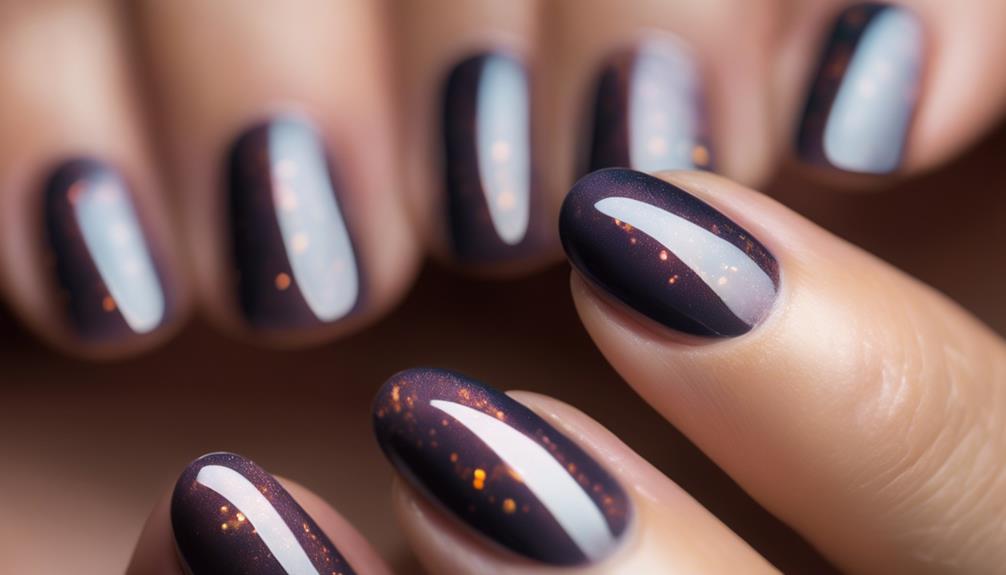
An improper application technique can significantly impact the curing process of gel polish, potentially leading to a sticky finish that undermines the desired results. To ensure a smooth and flawless gel polish application, consider the following key factors:
- Thin Layers: Applying thick layers of gel polish can prevent the UV or LED light from penetrating through to cure the polish fully. To avoid stickiness, apply thin, even coats of gel polish, ensuring each layer is cured properly before applying the next.
- Proper Cure Time: Each layer of gel polish must be adequately cured under the lamp for the recommended time. Inadequate curing can result in a tacky or sticky residue on the nail surface.
- Avoiding Skin Contact: Any gel polish that comes into contact with the skin surrounding the nail can cause stickiness. Be sure to clean up any excess polish around the cuticles before curing to prevent a tacky finish and ensure a clean, professional look.
Low-Quality Gel Polish
The quality of gel polish used plays a crucial role in determining the final outcome of a gel manicure. Low-quality gel polishes often contain inferior ingredients that can lead to issues such as stickiness even after curing. These polishes may not have the same level of pigmentation, durability, or compatibility with curing lamps as higher-quality counterparts.
Low-quality gel polishes may also have inconsistent formulas, leading to uneven application and curing. This can result in a tacky layer on the nails that is difficult to remove, affecting the overall look and longevity of the manicure. Furthermore, cheaper gel polishes may contain harmful chemicals that can cause adverse reactions or damage to the natural nails over time.
Investing in high-quality gel polishes from reputable brands can help ensure a smoother application process, better curing results, and a longer-lasting, professional-looking manicure. By prioritizing quality over price, individuals can achieve salon-worthy results at home or in a professional setting.
Residue Left on the Nails
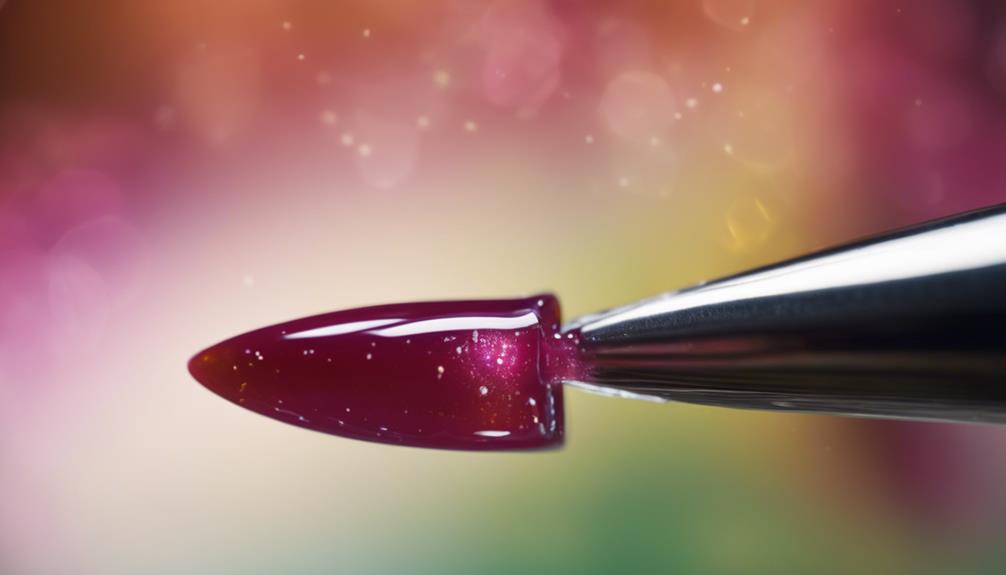
Why does residue sometimes remain on the nails after curing gel polish? Residue left on the nails post-curing can be frustrating and may affect the longevity of your manicure. Here are some reasons why this residue may occur:
- Unclean Nails: Any oils, lotions, or debris on the nails can create a barrier between the gel polish and the nail, leading to residue post-curing. It is essential to thoroughly cleanse the nails before applying gel polish for optimal adhesion.
- Overapplication of Gel Polish: Applying too thick a layer of gel polish can result in an uneven cure, leaving a sticky residue on the nails. It is recommended to apply thin, even layers and ensure each layer is adequately cured.
- Incorrect Curing Time or Technique: Not curing the gel polish for the recommended time or using improper curing techniques can also cause residue to remain on the nails. Following the manufacturer's instructions for curing times and techniques is crucial for a flawless finish.
Frequently Asked Questions
Can Using a Different Brand of Gel Polish Affect Stickiness After Curing?
Using a different brand of gel polish may impact the stickiness post-curing due to variations in formula and quality. It's advisable to stick with one brand for consistent results, ensuring compatibility and optimal performance.
Does Humidity or Temperature Impact the Stickiness of Gel Polish?
Humidity and temperature can indeed impact the stickiness of gel polish after curing. These environmental factors can influence the polymerization process, affecting the final texture and adherence of the gel polish. Understanding and managing these variables is crucial for optimal results.
Can Applying Too Thick of a Layer of Gel Polish Cause Stickiness?
Applying gel polish in thick layers can indeed lead to stickiness post-curing. Similar to spreading butter on toast, a thin, even layer ensures proper curing and a smooth finish. Thicker application hinders the UV light's ability to penetrate evenly, causing stickiness.
Is It Possible for Gel Polish to Remain Sticky Due to Over-Curing?
It is plausible for gel polish to sustain stickiness post-curing due to overexposure to UV/LED light, resulting in incomplete polymerization. This leads to an inhibition layer that necessitates appropriate curing times and proper application techniques for optimal results.
Could Using a Top Coat Incorrectly Contribute to Gel Polish Stickiness?
Utilizing a top coat incorrectly may indeed exacerbate gel polish stickiness. Ensuring proper application technique, adequate curing time, and compatible products is crucial for a flawless finish. Precision in each step promises a polished outcome.

